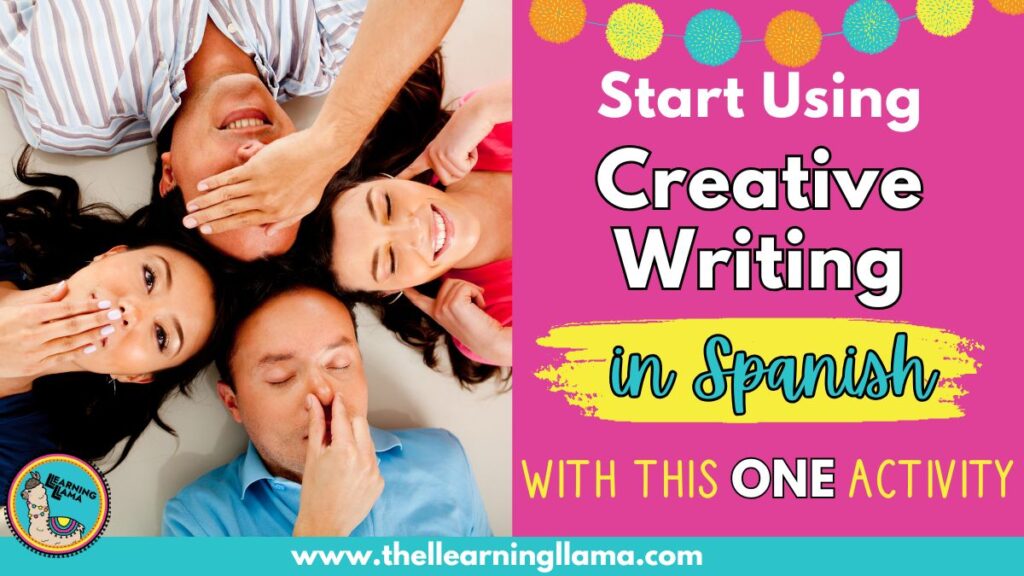Teaching creative writing in Spanish class can seem far fetched. After all, we are just trying to get our students to communicate. Why add another level of difficulty to the process? But, creative writing has many benefits, and isn’t Spanish a language classroom, where we encourage all types of communication?! Benefits of creative writing include: encouraging self-expression, building confidence, boosting imagination, improved concentration, and many others. I’m going to share with you one very simple activity that you can use to start teaching creative writing in Spanish class.
I once attended a professional development session led by a teacher in my school’s English department. He was presenting on creative writing techniques for any classroom. He shared with us the: 5 senses brainstorming technique. It is a simple, yet very effective way to get your students to brain dump all the details they can before creative writing in Spanish!

Here’s how the 5 senses brainstorming technique works:
As we all sat in his classroom, he asked us to think about a memory from high school. Then, he guided us through various brainstorming steps in preparation for writing about this memory.
He instructed us to take out a piece of paper. We began by putting ourselves back in this memory and using our 5 senses to remember as much detail as possible. We started with our sight. He gave us 2-3 minutes to write down as many visualizations about this memory. Just making a list. We could not think about anything else other than what we saw, what visually came to mind.
Next, was hearing, anything we heard or associated with this memory: sounds, music, voices, etc. Following this, was taste, touch, and smell. We followed the same brainstorming steps for all 5 senses. During each of those 5 mini-brainstorming sessions, we focused solely on that one sense.
After we compiled all of our notes, we were then able to draft a very detailed, very elaborate description of our memory. The key to this creative writing session being successful… dedicated, not-rushed brainstorm time!
My world language colleagues and I found this to be such a beneficial technique for writing that we transposed it to our lessons and classrooms to enhance our students’ writing.
Here are some of the ways that you can incorporate the 5 senses technique for creative writing in Spanish:
Art Unit
When teaching about Salvador Dali, we showed our students The Persistence of Memory. This famous painting has a lot of imagery and details that can be overlooked if not analyzed carefully. Our students completed a graphic organizer, as they “jumped into the painting.” What did they see, hear, taste, smell, and feel? From there, they can write a description of the painting. It does not need to be “accurate” based on the artists’ original meaning. This is creative writing! And can be used with any artwork that offers a lot of imagery. Learn more about teaching art here.
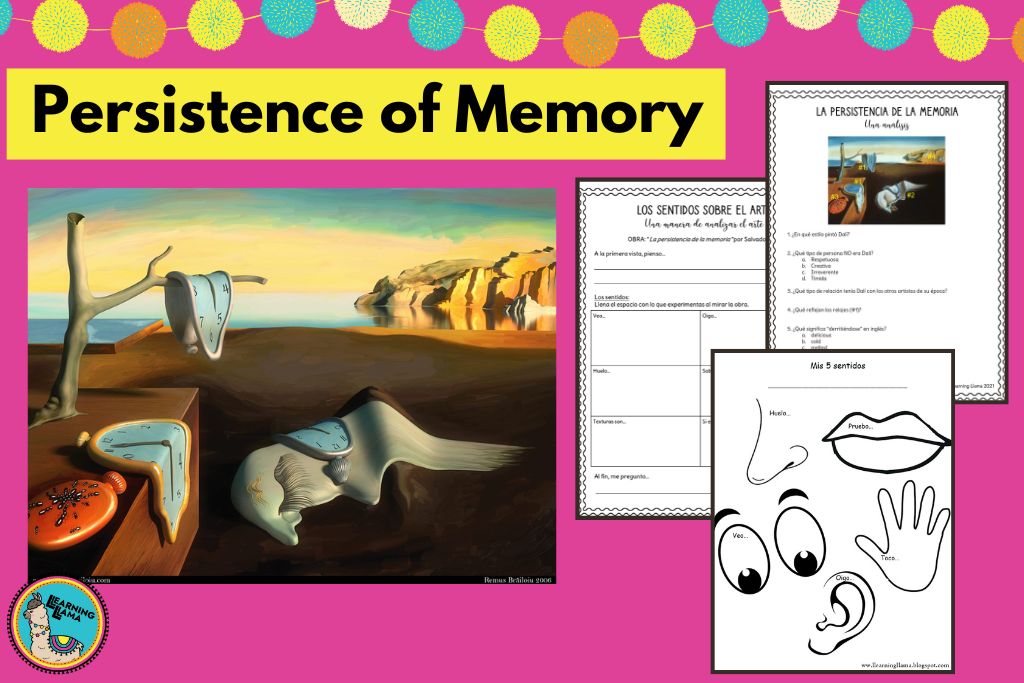
Any Image (not just art!)
The same can be done with just any image. It does not need to be a painting. Find any fun image that would inspire a story or a lot of detail. Here is a set of 50 creative writing images! Then, have students “jump into the picture.” Imagine they are inside it, just like the painting.
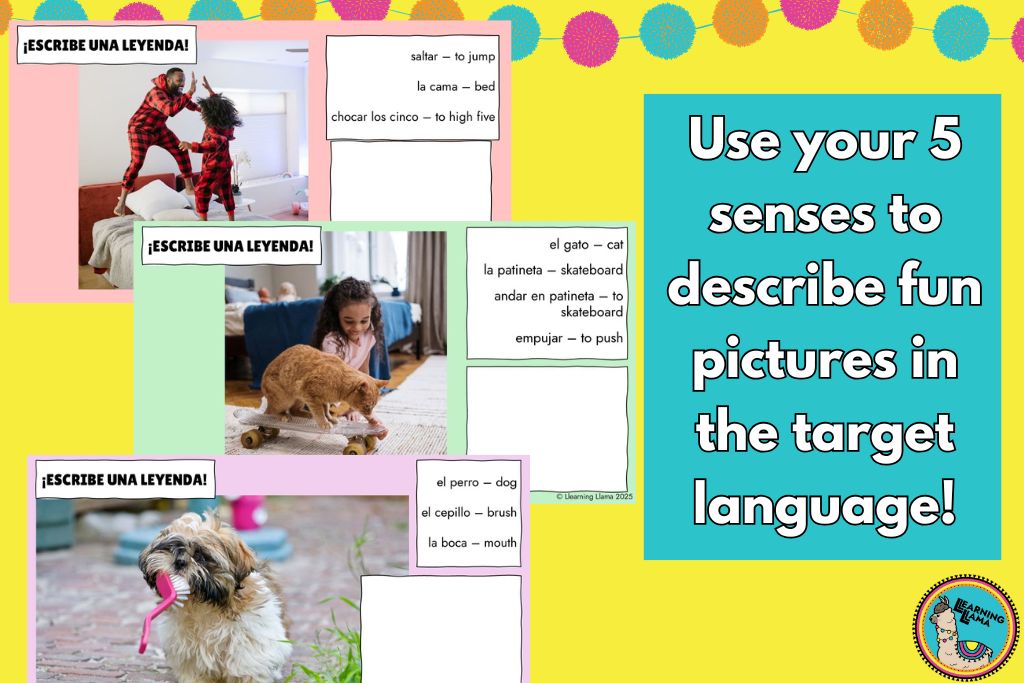
Past Tense
When learning about the preterit vs. imperfect, we teach our students that actions are preterit and emotions and descriptions are imperfect. So, using your 5 senses to recreate a memory is a great way to incorporate the imperfect in an authentic way. Prior to writing anything in the past tense (What did you do over the weekend? Tell me about your summer, etc.), let students slow down and imagine the memory with all 5 senses. Students won’t just use the preterit to write what they did, but now they’ll add in the descriptions using the imperfect.
Everyday objects
I love using Pablo Neruda’s odes in upper level Spanish classes. In his odes, he praises everyday objects. His simple oda al tomate is a great text that provides visualization and personification all about a tomato. You can read this ode, or any of his odes and have students complete a 5 senses graphic organizer. This will inspire students to write their own odes about an everyday object, using their 5 senses! Once they see how Neruda accomplishes this with such great detail, they will have more motivation. Read how I teach about Neruda’s odes here.
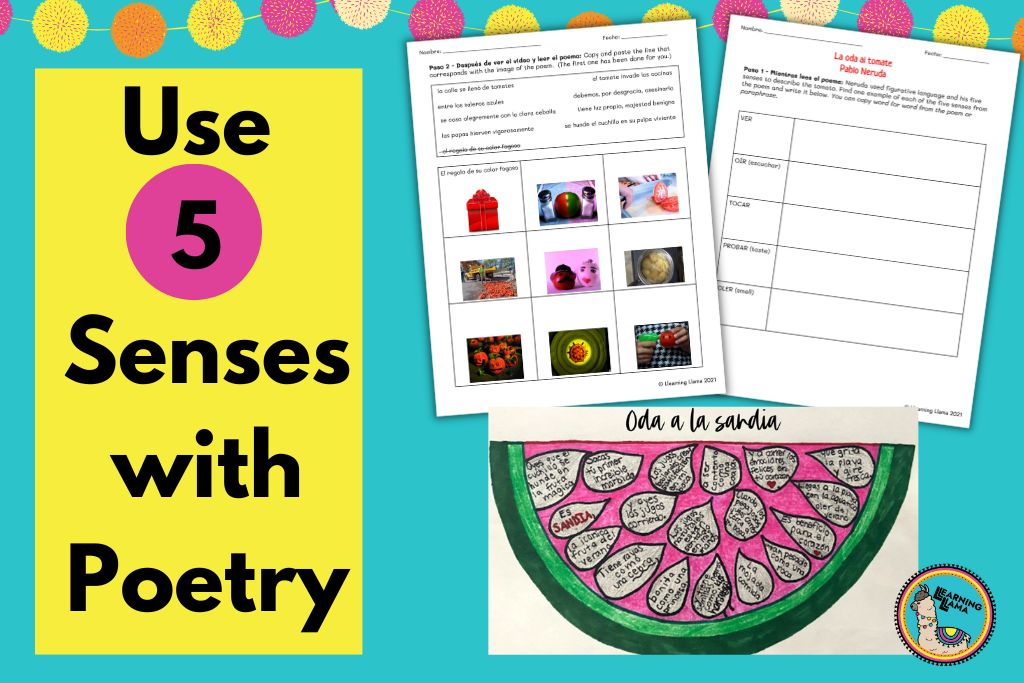
Comida or Food Unit
Food is not just about taste. Food is a 5-senses experience! Have students draw their favorite meal and then do the 5-senses brainstorming session to really describe this plate.
Creative Writing Graphic Organizers
I always recommend using graphic organizers when doing any type of writing in Spanish class. Students need scaffolding, organization, and dedicated brainstorming time. You can get my 5 senses graphic organizers here, in this set of 12 graphic organizers for Spanish class. You’ll find them to be super helpful during any reading or writing activities. Learn more about these graphic organizers on my blog post, filled with ideas for using these to enhance student engagement!
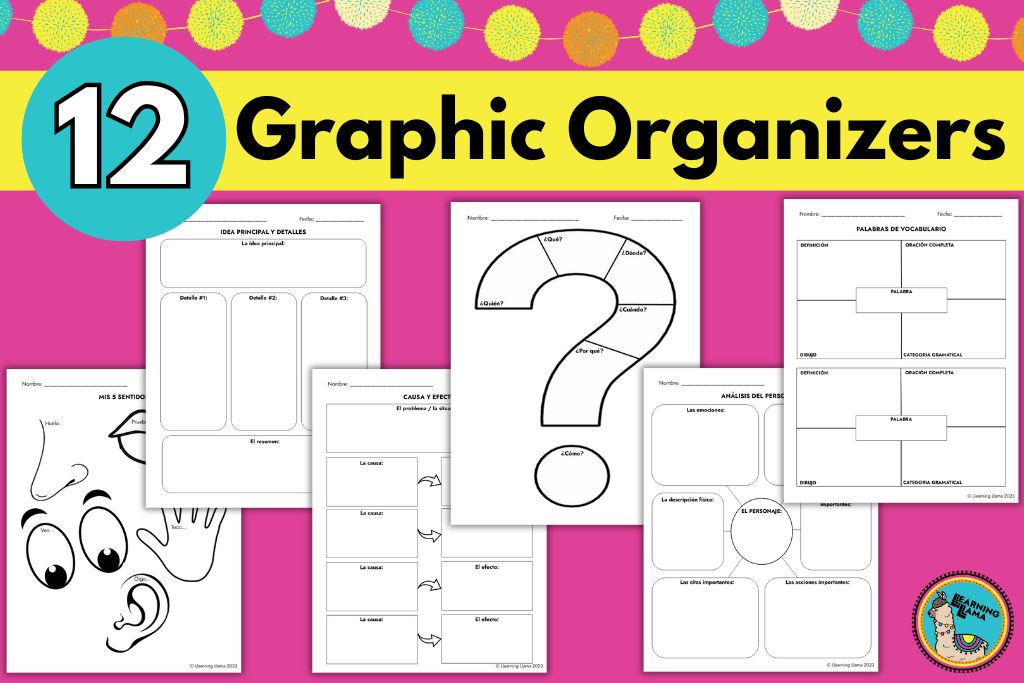
In my next blog post, I’ll share how you can do quick, creative writing warm-ups every day to kick-start your classes! Students’ minds will be energized and ready-to learn!

